Scientific name Canis lupus familiaris | ||
 | ||
Other names Mudhol DogCaravan Hound Height Male: 68–72 cm, Female: 64–68 cm Colors Black, White, Chocolate, Fawn, Brindle Weight Male: 22–28 kg, Female: 22–28 kg Temperament Elegant, Graceful, Loyal, Courageous Similar Rajapalayam, Chippiparai, Rampur Greyhound, Kanni, Combai | ||
The Mudhol Hound, also known as Caravan Hound is an Indian breed of dog of the sight hound type. The feathered variety is commonly referred to as a Pashmi. In the villages he is known as the Karwani. It is a common companion amongst village folk in India's Deccan Plateau, who use the dog for hunting and guarding.
Contents
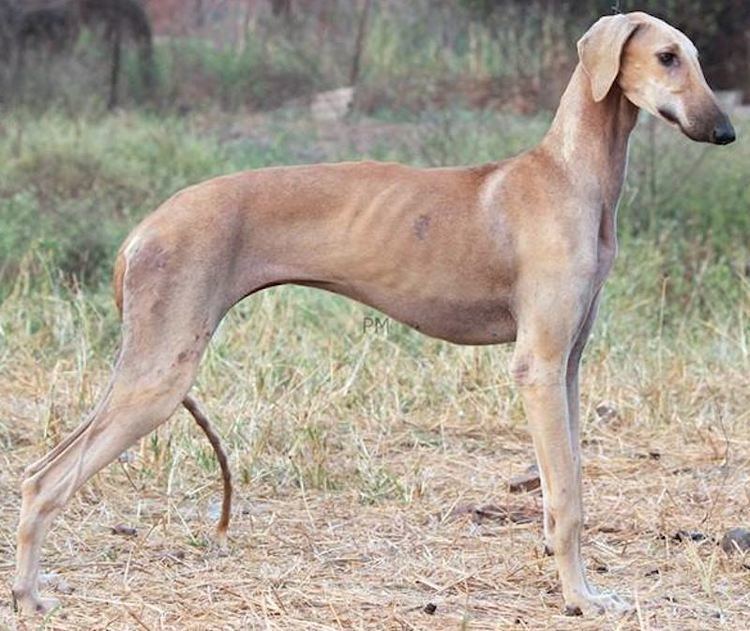
The Kennel Club of India (KCI) and Indian National Kennel Club (INKC) recognize the breed under different breed names. The KCI registers it as a Caravan Hound while the INKC goes with the name Mudhol Hound.
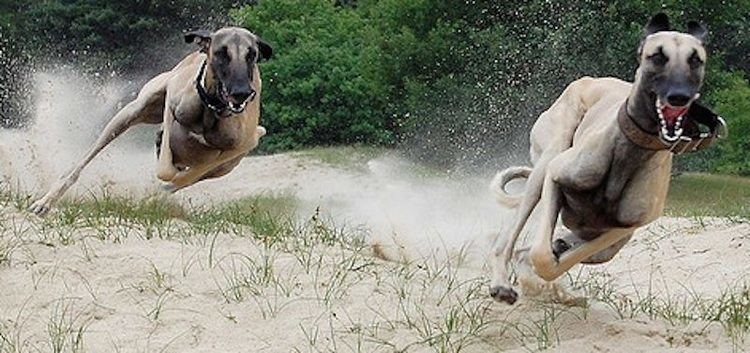
The postage stamp with face value of Rs.5.00 is released by Indian Postal Department on 9th January 2005, together with 3 other dogs i.e. Himalayan Sheep Dog (Rs. 5.00), Rampur Hound (Rs. 5.00) and Rajapalayam (Rs. 15.00), in recognition of Mudhol Hound.
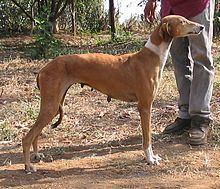
Mudhol hound karnataka dog breed hunting dogs
Appearance
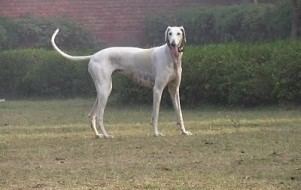
The Mudhol or Caravan hound has well-defined characteristics. The head is long and narrow, broad between the ears with a tapering muzzle. The jaws are long and powerful, with a scissors bite. The nose is large and black. The ears are pendulous and hang close to the skull. The eyes are large and oval in shape, from dark to hazel. The expression is a piercing gaze. The neck is long, clean, and muscular, and fits well into the shoulders. The forelegs are long and straight. The back is long, broad and well-muscled. The loins are wide and deep. The chest is strong and deep with well sprung ribs. The abdomen is tucked in. The hind quarters appear wide and well-muscled. The tail is set on low, strong at the base and tapering, quite long and carried in a natural curve. The gait is high-footed, flexing all four legs, but should not be hackneyed. There are two coat varieties—one with an entirely smooth coat and the other with silky featherings on the ears, legs, and tail. Acceptable colours are fawn, fallow, red, cream, black, and mouse-grey, or any of these colours broken with a minimal amount of white.
Temperament
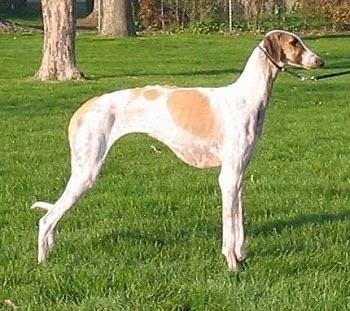
The breed is above all a working hound, capable of providing an excellent performance in the field on a consistent basis, under gruelling conditions that would decimate most other dogs. They are elegant, graceful and courageous. Its physical strength couples with great speed and plenty of stamina to allow it to catch and kill several types of game, from hare to blackbuck, over rough country. It is not an ideal dog for the apartment dweller, as it needs a great deal of space and exercise; although if arrangements are made to exercise the dog regularly in a sufficiently large, safely fenced area, it may do well in a flat or any other dwelling.
The breed, if treated with kindness and respect, can be exceptionally loyal. They are not very friendly, and do not like to be touched by strangers. However, a Caravan should never be aggressive, as this sort of temperament is not ideal for a hunting dog, which must tolerate other dogs and human beings, especially when they are not intruding on his territory. It makes a reasonable watch dog, and can protect that which he holds dear, should the need arise. He should always be treated in a kind, consistent, fair, and respectful manner, otherwise he may develop a nervous or vicious nature—either of which are difficult to live with.
Breeding
About 750 families in and around Mudhol town of Karnataka are raising this breed for marketing the puppies.
History
The Caravan was introduced to the Deccan Plateau of western India from Central Asia and Arabia, and can thus be considered a direct descendant of the Saluki or Tāzī. This region covers parts of the states of Karnataka, Maharashtra, and, to a lesser degree, Andhra Pradesh. The breed is popular in and around Mudhol Taluk of Karnataka and thus the breed got the name as Mudhol hound.
Shrimant Rajesaheb Malojirao Ghorpade of Mudhol (1884-1937) of the Mudhol State is credited with reviving the Mudhol hound. He noticed local tribal people called Beda using these hounds for hunting. Using selective breeding, he was able to restore the royal Mudhol hound. On a visit to England in the early 1900s, the Maharaja of Mudhol State presented King George V a pair of hounds, which popularized the Mudhol hound breed.
Usage: The Indian Army has expressed its desire to use the Mudhol sight hound for surveillance and border protection duties. It has obtained six Mudhol dogs for testing at the Army's Remount Veterinary Corps at Meerut. The dogs were bred after selection, at the Canine Research and Information Centre in Thimmapur near Mudhol in Bagalkot district of Karnataka. The CRIC is a unit of the Karnataka Veterinary, Animal and Fisheries Sciences University, Bidar.
